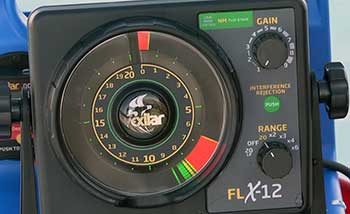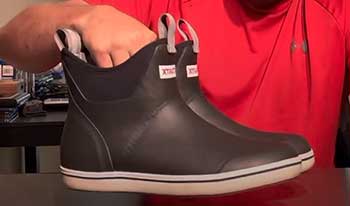I’ve spent countless hours casting lines and battling fish, and I know choosing the right spinning reel can make or break your day on the water. In this article, I’m comparing two of Shimano’s most popular budget-friendly reels: the Sedona and the Sahara.
My goal is to break down their features, performance, and value through my own fishing experiences, helping you decide which reel suits your needs. With a detailed comparison table, pros and cons, and real-world insights, I’ll guide you to the reel that’ll make your next trip unforgettable.
A Brief Comparison Table
| Feature | Shimano Sedona | Shimano Sahara |
| Size Range | 500–8000 | 500–5000 |
| Ball Bearings | 3+1 | 4+1 |
| Gear Ratio | 4.6:1–6.2:1 (varies by model) | 5.0:1–6.2:1 (varies by model) |
| Weight Range | 6.2–21.7 oz | 6.9–10.6 oz |
| Hagane Gear | Yes | Yes |
| X-Ship Technology | No | Yes |
| SilentDrive | Yes (FJ models) | Yes (FJ models) |
| G-Free Body | Yes | Yes |
| Propulsion Line Management | Yes | Yes |
| Max Drag | Up to 24 lbs (8000 model) | Up to 20 lbs (5000 model) |
| Price Range | $60–$90 | $80–$110 |
| Best For | Versatile fishing, heavy saltwater | Smooth performance, lighter applications |
My Journey With Shimano Reels
I’ve been fishing since I was a kid, and Shimano has always been a name I trusted. Their reels strike a balance between quality and affordability, which is why I gravitated toward the Sedona and Sahara when I needed reliable spinning reels without breaking the bank.
Over the past few years, I’ve used both for everything from freshwater bass fishing to inshore saltwater adventures. Each has its strengths, and I’ve got stories to share about how they’ve performed in the heat of the moment. Let’s break down what makes these reels tick and how they stack up.
Shimano Sedona: The Workhorse
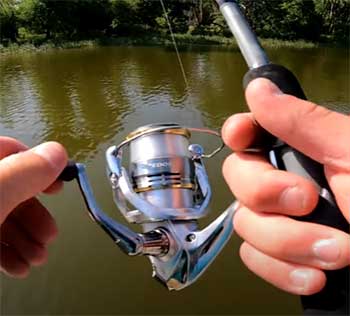
The Shimano Sedona has been my go-to for situations where durability matters most.
I remember a trip to the Gulf Coast, where I paired a Sedona 4000 with a medium-action rod to target redfish.
The reel’s solid build held up against the salty spray and the relentless pull of a 10-pound red.
What struck me was how smooth it felt, even after hours of casting and retrieving.
Key Features of The Sedona
The Sedona’s standout feature is its Hagane cold-forged gear system. This technology gives the reel a robust feel, like it’s built to last through years of abuse. I’ve dropped my Sedona in the sand, dunked it in saltwater, and it still cranks like it’s fresh out of the box.
The reel comes in a wide range of sizes, from 500 to 8000, making it versatile for everything from ultralight trout fishing to chasing big snapper offshore.
Another feature I appreciate is the G-Free Body design. It shifts the reel’s center of gravity closer to the rod, reducing fatigue during long casting sessions. I noticed this on a day-long bass fishing trip—my arm felt less strained compared to using older reels.
The Propulsion Line Management System also helps, ensuring my casts are smooth and reducing those annoying wind knots that can ruin a good day.
The Sedona FJ models include SilentDrive technology, which minimizes noise and vibration. When I upgraded to an FJ model, the difference was noticeable—cranking felt quieter and more refined, especially when working finesse lures like soft plastics.
Pros of The Shimano Sedona
- Wide Size Range: With models from 500 to 8000, you can tackle anything from panfish to offshore giants. I’ve used the 8000 for heavy saltwater fishing, and it’s a beast.
- Affordable Price: Starting around $60, it’s a steal for the quality. I snagged my Sedona 2500 at a local shop for $70, and it’s outperformed reels twice the price.
- Durable Hagane Gears: These gears are tough. I’ve hooked into some aggressive fish, and the Sedona never skipped a beat.
- Lightweight for Larger Sizes: Even the 8000 model feels manageable, thanks to the graphite body.
- SilentDrive (FJ Models): The quieter operation makes finesse fishing more enjoyable.
Cons of The Shimano Sedona
- Fewer Ball Bearings: With a 3+1 bearing system, it’s not as smooth as the Sahara. I noticed a slight difference when retrieving under heavy loads.
- No X-Ship Technology: Without X-Ship, the gears don’t have the extra stability of the Sahara, which I felt when fighting bigger fish.
- Heavier in Larger Sizes: The 8000 model, at 21.7 oz, can feel bulky on lighter rods.
- Basic Drag in Smaller Models: The drag on the 500 and 1000 sizes isn’t as refined for finesse applications.
Also Read: Comparison of Shimano Stradic and Vanford.
Shimano Sahara: The Smooth Operator
The Sahara, on the other hand, feels like the Sedona’s more polished cousin. I took a Sahara 2500 to a local lake for bass fishing, pairing it with a 7-foot ultralight rod and braided line.
The smoothness of the retrieve was almost addictive—every crank felt effortless, even when working a crankbait through heavy cover. It’s become my favorite for lighter applications where precision matters.
Key Features of The Sahara
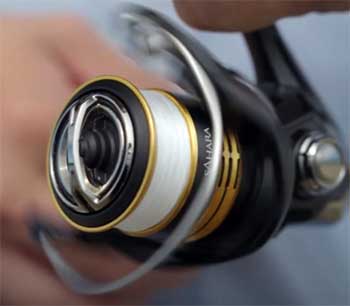
Like the Sedona, the Sahara boasts Hagane gears, but it steps things up with X-Ship technology.
This feature supports the pinion gear with additional bearings, reducing friction and boosting durability.
I noticed this when casting lightweight lures—the Sahara delivered longer, more accurate casts compared to my Sedona.
The 4+1 bearing system also adds to the smoothness, making it a joy to use for finesse techniques.
The Sahara’s size range (500 to 5000) is slightly narrower, but it covers most freshwater and inshore saltwater needs.
The G-Free Body and Propulsion Line Management System are here too, ensuring comfort and clean casts.
The FJ models include SilentDrive, which I found made a big difference when fishing in calm waters where every sound seems amplified.
Pros of The Shimano Sahara
- Smoother Retrieve: The extra ball bearing (4+1) makes a noticeable difference. I felt it when working jerkbaits—every twitch was crisp.
- X-Ship Technology: This adds stability and reduces friction, improving casting distance. I hit targets farther out with less effort.
- Lightweight Design: Ranging from 6.9 to 10.6 oz, it’s perfect for all-day fishing without wrist fatigue.
- Great for Finesse Fishing: The smooth drag and retrieve shine with light lures and lines.
- Reasonable Price: At $80–$110, it’s still budget-friendly for the performance.
Cons of The Shimano Sahara
- Limited Size Range: No 6000 or 8000 models, so it’s not ideal for heavy saltwater fishing.
- Slightly Pricier: It’s $20–$30 more than the Sedona, which might matter if you’re on a tight budget.
- Bail Issues (Older Models): I’ve heard from other anglers that older Sahara models had sticky bails, though my FJ model has been flawless.
- Less Drag Power: Max drag tops out at 20 lbs, which might struggle with trophy fish.
Head-to-Head: Sedona Vs. Sahara In The Field
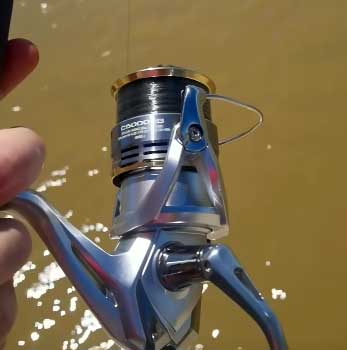
To give you a real sense of how these reels perform, let me share a few fishing trips where I put them to the test.
Last summer, I took both reels to a coastal inlet for some inshore fishing. The Sedona 4000 was paired with 20-pound braid, targeting redfish and flounder.
The Sahara 3000, spooled with 10-pound braid, was set up for speckled trout.
Both handled the saltwater environment well, but their differences stood out.
The Sedona’s robust build gave me confidence when a redfish made a strong run. The drag held steady, and the Hagane gears didn’t flinch.
However, when I switched to finesse lures for flounder, the retrieve felt a tad less fluid compared to the Sahara.
The Sahara’s X-Ship and extra bearing made casting light lures a breeze, and I landed a few trout with pinpoint accuracy. But when a larger fish hit, the Sahara’s drag felt slightly less capable than the Sedona’s.
On a freshwater trip targeting largemouth bass, the Sahara 2500 stole the show. Its smooth retrieve and lightweight feel were perfect for working soft plastics through lily pads. The Sedona 2500, while reliable, felt a bit heavier, and the retrieve wasn’t quite as silky.
For heavier applications, like tossing big swimbaits, the Sedona’s larger sizes (like the 6000) would be my pick over the Sahara’s max size of 5000.
Also Read: Comparison of Shimano Sustain And Vanford.
Performance Breakdown of Shimano Sedona And Sahara
- Smoothness and Retrieve: The Sahara’s 4+1 bearing system gives it an edge in smoothness. I felt this most when using finesse techniques, like drop-shotting for bass. The Sedona’s 3+1 system is solid but doesn’t match the Sahara’s buttery feel. If you’re into light tackle or long casting sessions, the Sahara’s X-Ship technology makes a difference by reducing friction and boosting precision.
- Durability: Both reels feature Hagane gears, so they’re built to last. I’ve put my Sedona through the wringer—sand, saltwater, and rough handling—and it’s still going strong. The Sahara’s X-Ship adds extra gear stability, which I noticed when fighting fish that put serious pressure on the reel. For heavy-duty use, the Sedona’s larger sizes give it an advantage, but the Sahara holds its own for most applications.
- Casting Performance: Thanks to the Propulsion Line Management System, both reels cast well, with minimal wind knots. The Sahara’s X-Ship gives it a slight edge for longer, more accurate casts, especially with lighter lures. I found this helpful when targeting spooky trout in clear water. The Sedona performs well but feels a bit less refined in finesse scenarios.
- Drag System: The Sedona’s drag is robust, especially in larger models (up to 24 lbs in the 8000 size), making it great for big fish. The Sahara’s drag (up to 20 lbs) is smooth but less powerful, which I noticed when a big redfish tested my setup. For most inshore and freshwater fishing, though, the Sahara’s drag is plenty capable.
- Weight and Comfort: The Sahara is generally lighter, ranging from 6.9 to 10.6 oz, which I appreciated during long days on the water. The Sedona’s weight varies more (6.2 to 21.7 oz), and while the smaller models are comparable, the larger ones can feel heavy. The G-Free Body on both helps, but the Sahara’s compact design feels more ergonomic.
- Price and Value: The Sedona is the budget champ, starting at $60. It’s hard to beat for the price, especially with Hagane gears and SilentDrive in FJ models. The Sahara, at $80–$110, offers smoother performance and X-Ship, which justifies the extra cost for finesse anglers. If you’re watching your wallet, the Sedona delivers more bang for your buck.
Which Reel Suits You?

Choosing between the Sedona and Sahara depends on your fishing style. If you’re after versatility and plan to tackle a range of species, from trout to offshore snapper, the Sedona’s wider size range makes it a no-brainer.
I’ve used the 8000 model for heavy saltwater fishing, and it’s held up where the Sahara can’t compete due to its size limitations.
If smoothness and finesse are your priorities, the Sahara is the way to go. Its extra bearing and X-Ship technology make it a dream for light tackle applications.
I love using my Sahara 2500 for bass fishing with finesse lures—it’s smooth, lightweight, and casts like a champ.
For beginners, both reels are user-friendly, but the Sedona’s lower price makes it more accessible. Seasoned anglers might lean toward the Sahara for its refined performance, especially if you’re sticking to lighter applications. If you fish in saltwater, both can handle it with proper care, but the Sedona’s larger models are better suited for heavy-duty use.
- Maintenance Tips From My Experience
Both reels are low-maintenance, but a little care goes a long way. After every saltwater trip, I rinse my Sedona and Sahara with fresh water, shake off the excess, and let them air dry. I add a drop of reel oil to the moving parts every few months, which keeps them running smoothly.
The Sedona’s simpler design makes it a bit easier to maintain, but the Sahara’s extra bearing means you need to ensure it stays clean to avoid grit buildup.
- When Each Reel Shines?
Let me paint a picture of when each reel has saved the day. On a windy day at the lake, I used the Sahara 3000 to skip a lightweight worm under docks. The smooth retrieve and long casts helped me land a 4-pound bass without a hitch.
Meanwhile, the Sedona 4000 was my hero on a rough day in the surf, where it powered through waves and sand to land a 12-pound redfish. Each reel has its moment—it’s about matching them to your fishing style.
Also Read: Comparison of Shimano Nasci And Sahara.
Frequently Asked Questions (FAQ)
Yes, it’s a reliable, durable reel with Hagane gears, great for various fishing types at a budget-friendly price.
Yes, with proper rinsing after use, it handles saltwater well, especially larger models like the 6000 and 8000.
It’s a Shimano spinning reel known for affordability, Hagane gears, and a wide size range for freshwater and saltwater fishing.
Recent models lack an anti-reverse switch, meaning you can’t back-reel, but the drag system is solid.
The Verdict: My Take And Your Choice
After years of fishing with both, I can say the Sedona is my pick for versatility and durability, especially if you’re on a budget or chasing bigger fish. The Sahara, though, is my choice for finesse fishing, where its smoothness and lightweight design shine. You can’t go wrong with either—Shimano’s quality is evident in both.
Think about your fishing goals: if you need a tough, all-purpose reel, grab the Sedona. If you want a smoother, more refined experience for lighter tackle, the Sahara’s your best bet. Whichever you choose, you’re getting a reel that’ll make your time on the water more enjoyable.
